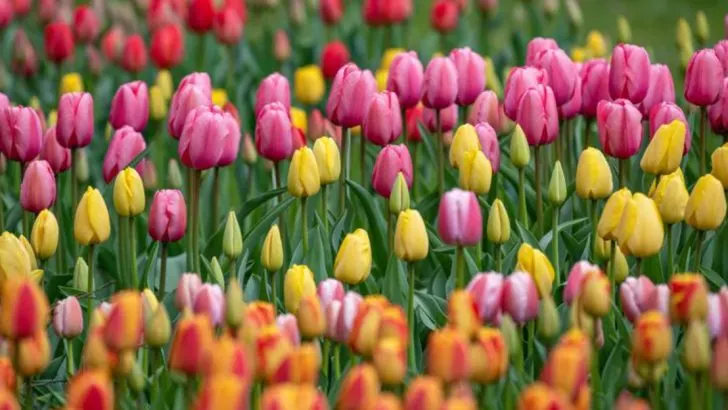Spring is the season of renewal, and what better way to celebrate than by filling your garden with vibrant blooms? These 24 stunning spring flowers, from tulips and daffodils to hellebores and hyacinths, will bring color, fragrance, and life to your outdoor space. Whether you prefer classic favorites or unique varieties, these blossoms will make your garden burst with beauty as soon as winter fades.
Tulip
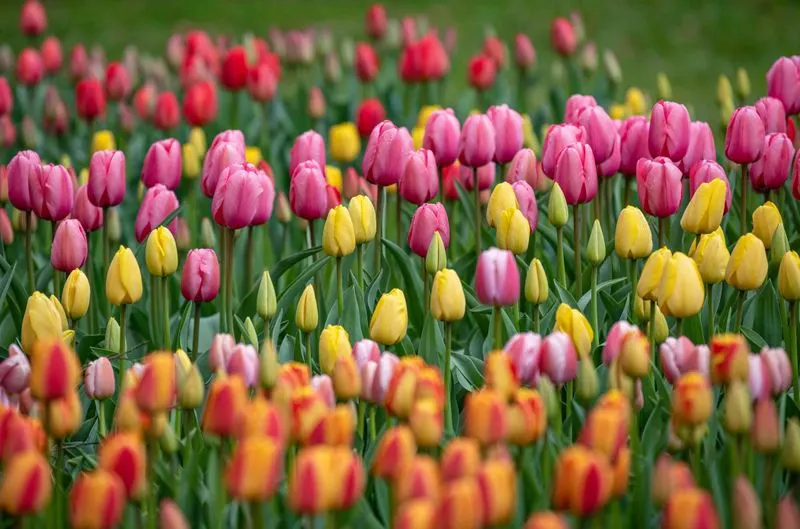
Known for their striking appearance, tulips bring a burst of color to any garden. Each bloom is like a small painting, with hues ranging from deep reds to soft pinks and sunny yellows. These flowers are not only beautiful but also versatile, thriving in various climates. Planting tulips in clusters can create a stunning visual impact. They’re an excellent choice for borders or to fill gaps in a garden bed. Easy to care for, tulips return year after year with minimal effort, adding cheer as soon as spring arrives.
Daffodil
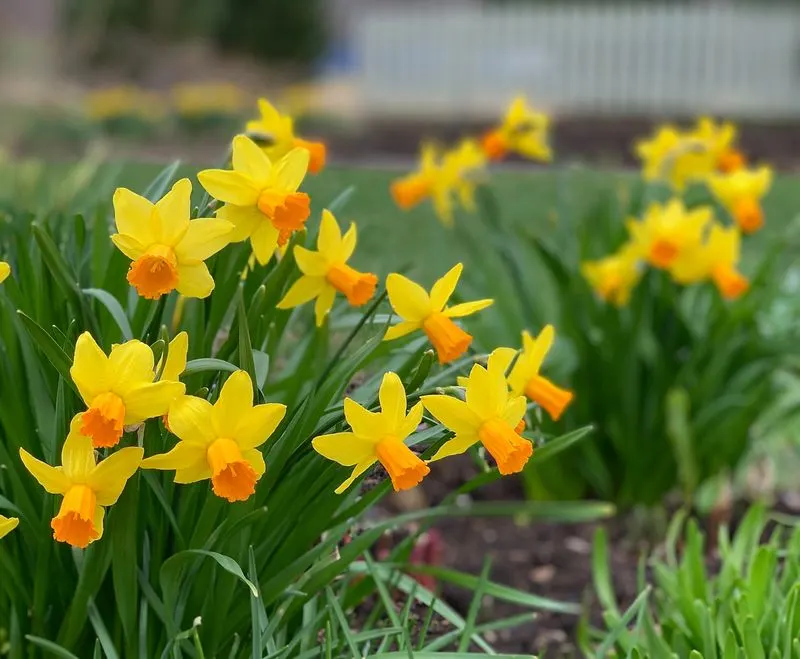
Daffodils are often seen as the heralds of spring, their sunny faces bringing light to any setting. These hardy perennials are perfect for gardeners of all levels, requiring little maintenance. Their trumpet-shaped blooms can range from classic yellow to white and even pale pink. Plant them in clusters for a natural look or line pathways for a more formal appearance. As they multiply over the years, daffodils offer a reliable splash of color that marks the end of winter.
Crocus
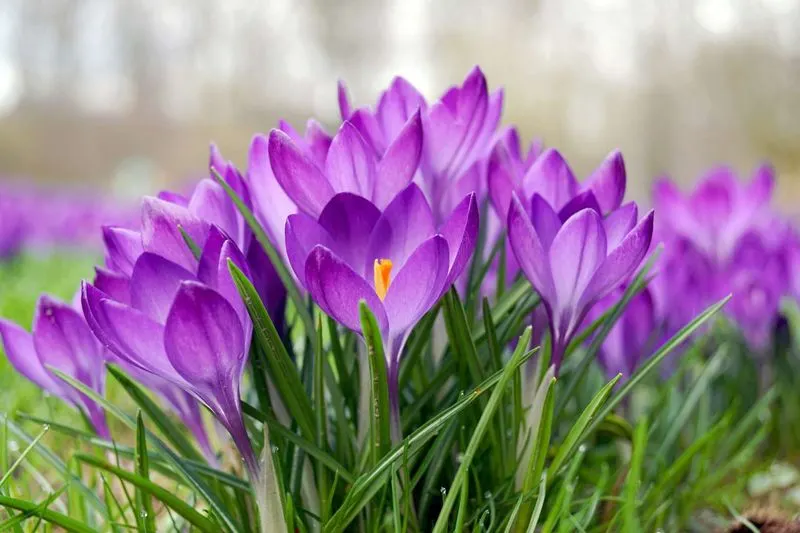
Crocuses are among the first flowers to break through the thawing ground, often appearing even before the last snow melts. These small, cup-shaped flowers are available in a variety of colors, including purple, yellow, and white. Their petite size makes them ideal for rock gardens or the front of flower beds. Crocuses are a signal that spring is truly on its way, and their resilience is inspiring. They may be small, but their impact is significant, offering a hopeful glimpse of warmer days ahead.
Hyacinth
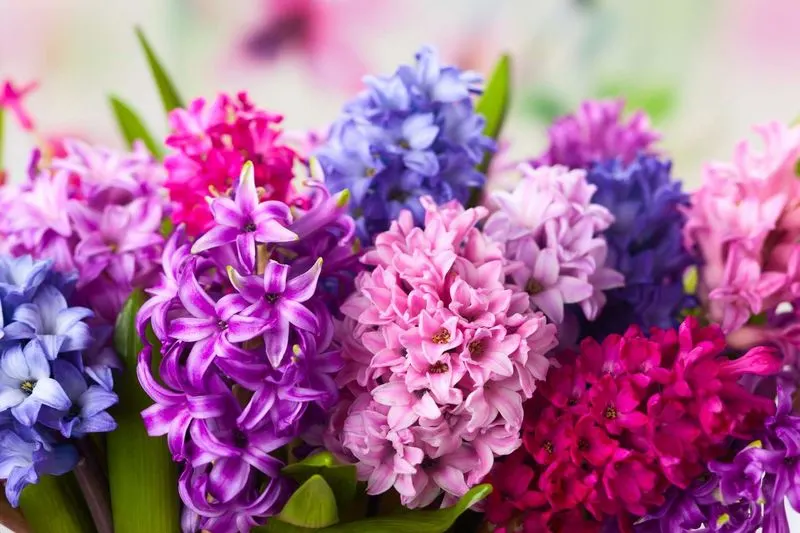
Hyacinths are celebrated for their intoxicating fragrance that fills the air during springtime. These flowers grow in dense clusters, with each bloom resembling a miniature bouquet. Available in various shades from bold blues to soft pinks, they add both color and scent to the garden. Plant hyacinths near walkways or entrances to enjoy their perfume up close. They’re an excellent choice for pots and can easily be forced indoors to bring early spring cheer.
Cherry Blossom
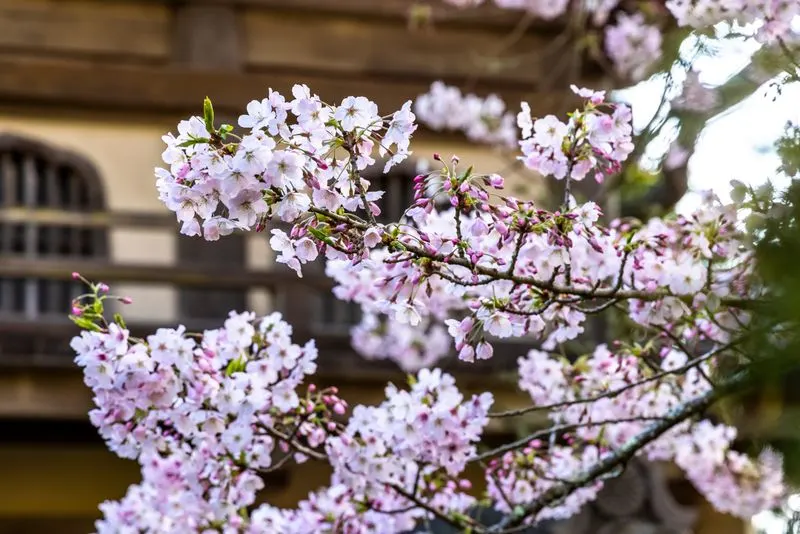
Cherry blossoms are the epitome of spring beauty with their fleeting, delicate blooms. These trees explode with pink or white flowers, creating a canopy that looks almost ethereal. Often associated with Japanese gardens, cherry blossoms evoke a sense of tranquility and fleeting beauty. Though their bloom period is short, it is a spectacle that draws admiration. A cherry blossom tree can serve as a stunning focal point in any garden, and its blossoms are sure to leave a lasting impression.
Lilac
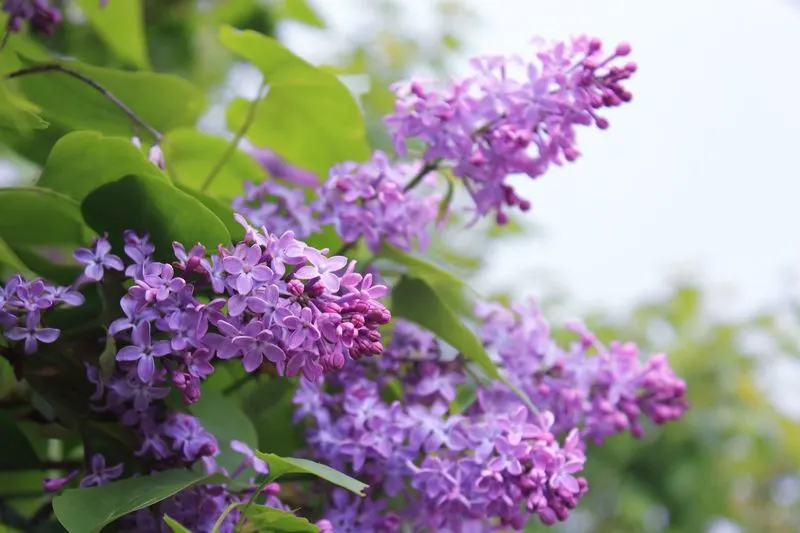
Lilacs are cherished for their sweet, nostalgic fragrance and abundant blooms. These bushes burst into flower with clusters of tiny blossoms in shades of purple, white, or pink. They are ideal for creating informal hedges or planting along fences. Lilacs thrive in well-drained soil and appreciate full sun. Aside from their beauty, they attract pollinators like bees and butterflies. Their enchanting scent makes them a favorite for cutting and bringing indoors, where their fragrance can be enjoyed at close quarters.
Iris
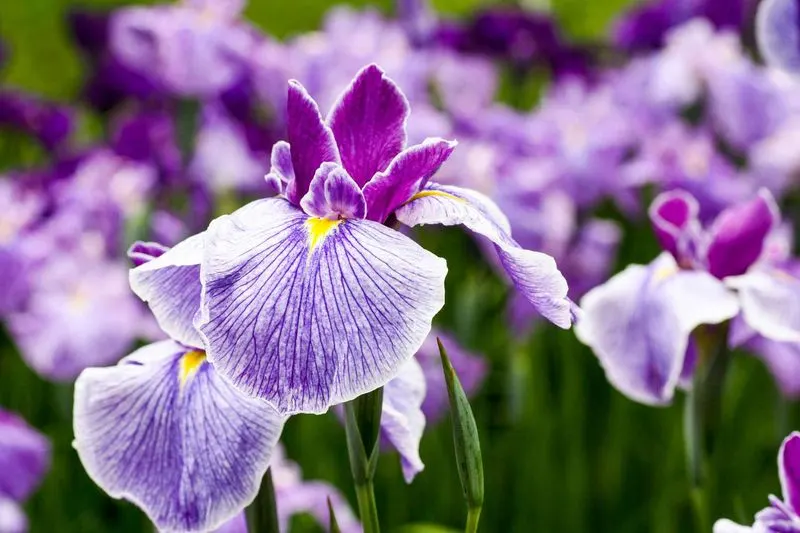
The iris stands out for its majestic blooms and intricate petal patterns. Known for their regal appearance, these flowers come in a wide spectrum of colors, including purples, blues, and yellows. Irises are perfect for adding height to flower beds, with their tall, elegant stems. Their structure adds a dynamic element to garden designs. While they require some care, the striking beauty they bring is well worth the effort. Irises can transform any garden into a visual masterpiece with their distinctive flair.
Peony
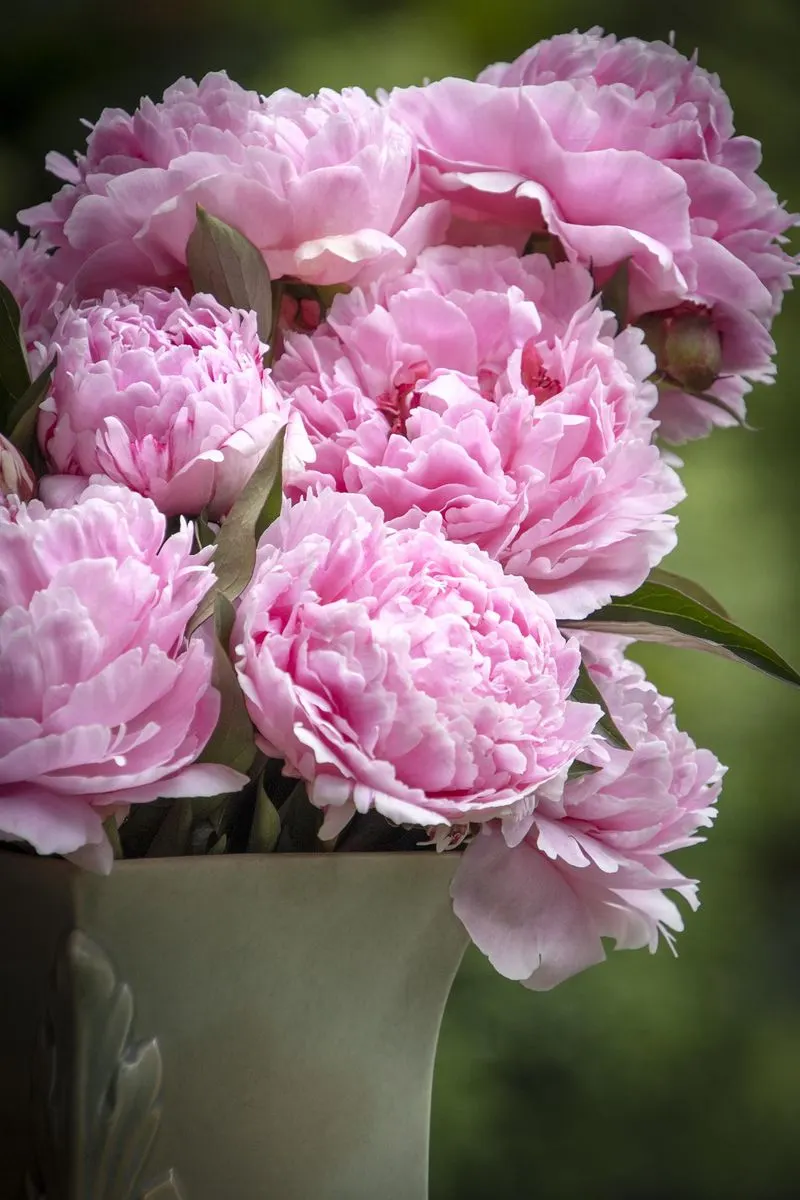
Peonies are prized for their large, lush blooms that resemble fluffy pompoms. These flowers are a favorite in many gardens due to their longevity and stunning appearance. Available in shades from deep crimson to pastel pink, peonies make excellent cut flowers. They thrive in sunny spots and well-drained soil, returning each year with minimal fuss. Their opulent blooms create a focal point in any garden setting and often become a talking point among visitors.
Ranunculus
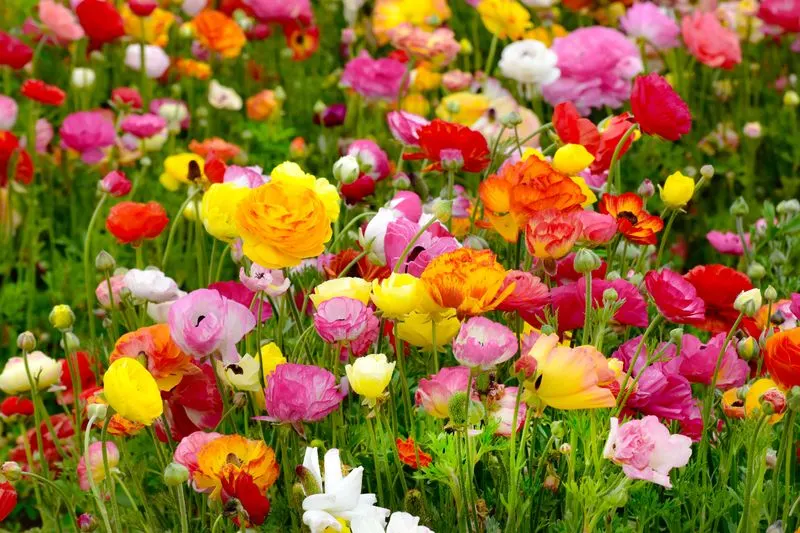
Ranunculus offers blooms that are as soft as butter, with layers of petals forming intricate rosettes. These flowers are a popular choice for spring weddings and bouquets due to their elegant shape and diverse color palette. From white to vivid oranges and reds, ranunculus can complement any garden theme. Plant them in sunny locations with good drainage to enjoy their full potential. Their delicate beauty belies their hardiness, making them a delightful addition to any spring garden.
Magnolia
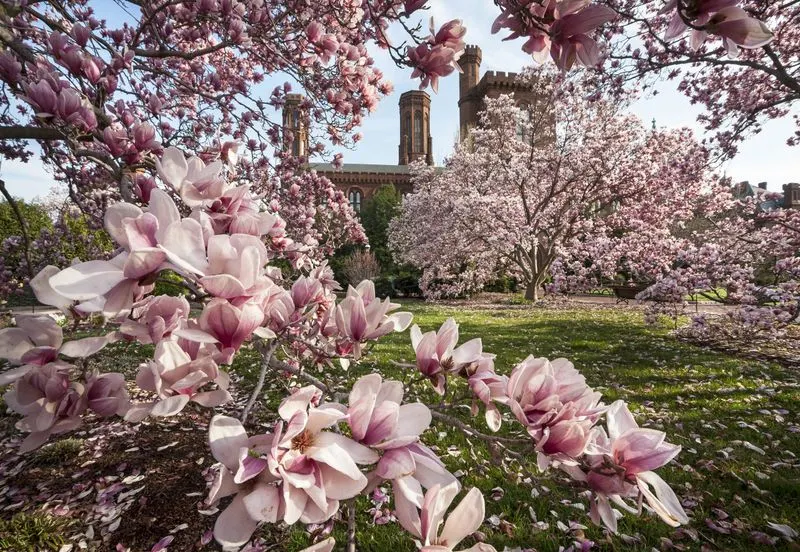
Magnolia trees are known for their spectacular, saucer-sized blooms that appear even before the leaves unfurl. These flowers exude a subtle, sweet fragrance that enhances their elegant appearance. Magnolia varieties can range from towering trees to compact bushes, suitable for different garden sizes. Their blooms can be white, pink, or purple, adding a touch of grandeur to spring landscapes. Magnolias are often planted as focal points, where their blooms can be fully appreciated.
Bluebell
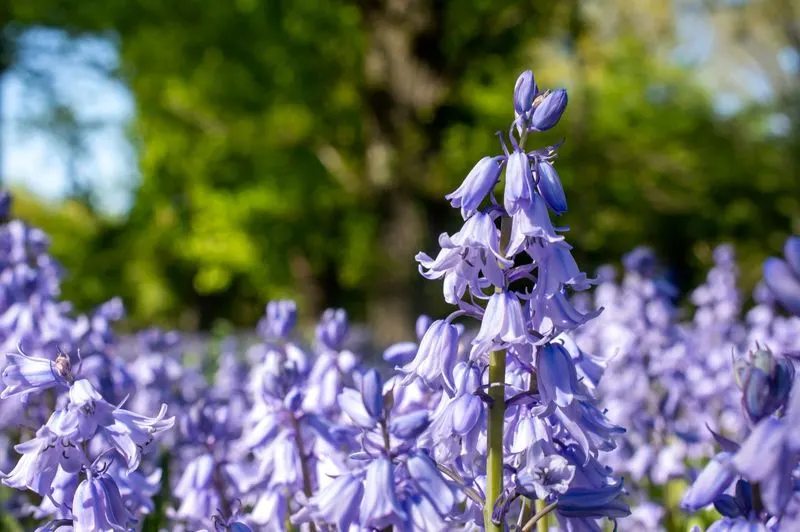
Bluebells are enchanting, bell-shaped flowers that create a sea of blue when they bloom in mass. These flowers are often associated with woodland areas, thriving in dappled sunlight. Bluebells are perfect for naturalizing in shaded garden corners, where their delicate blooms can form beautiful drifts. Their presence is a sure sign of spring, and their subtle fragrance is a delightful bonus. Bluebells are a testament to the beauty of simplicity and the charm of nature’s cycles.
Primrose
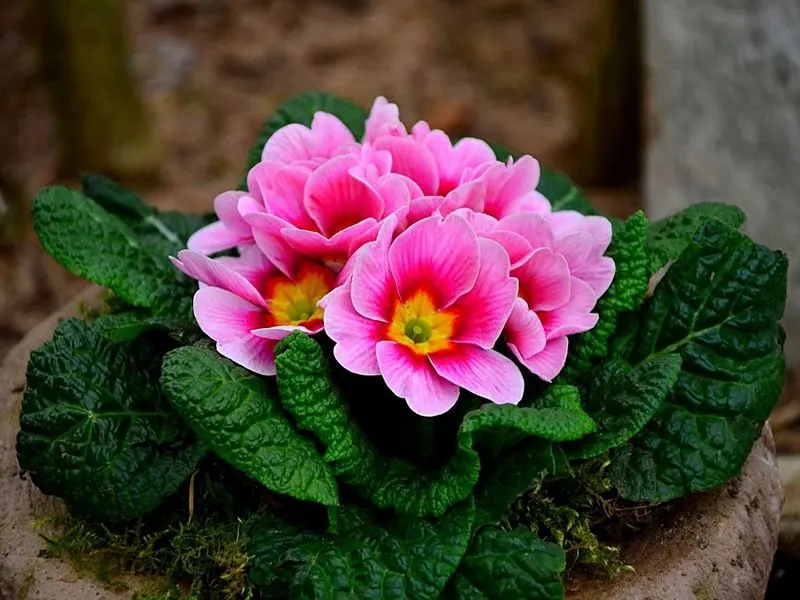
Primroses bring early color to gardens, with their cheery blooms emerging as soon as winter wanes. These flowers are available in a wide array of colors, including yellows, pinks, and purples, making them versatile for any garden palette. Primroses thrive in cooler temperatures and can be grown in containers or garden beds. Their compact size makes them ideal for front borders or rockeries. Despite their delicate appearance, primroses are hardy and easy to care for, offering vibrant beauty.
Snowdrop
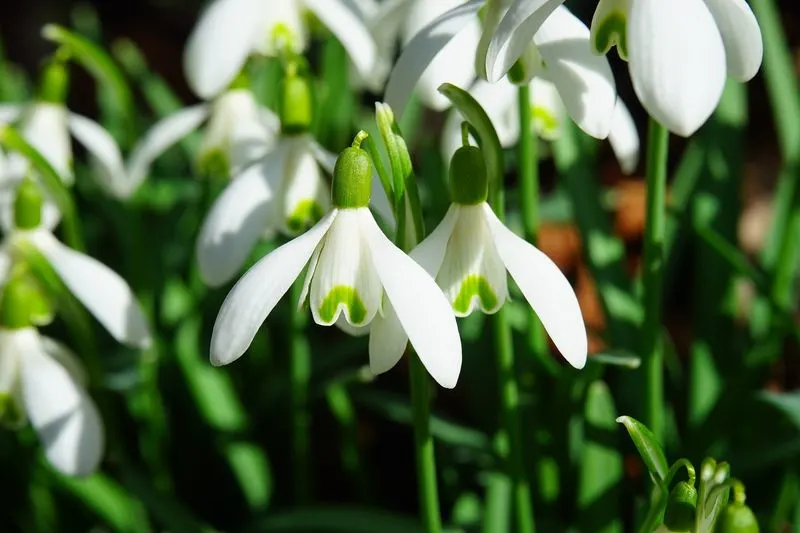
Snowdrops are among the first heralds of spring, often blooming while winter still lingers. These delicate, nodding white flowers are a symbol of hope and renewal. Snowdrops prefer cool, moist soil and are best planted in clusters to create a naturalized effect. Their understated beauty is perfect for woodland gardens or shaded borders. As one of the earliest bloomers, snowdrops offer a glimpse of the floral abundance to come, lifting spirits as the seasons change.
Forget-Me-Not
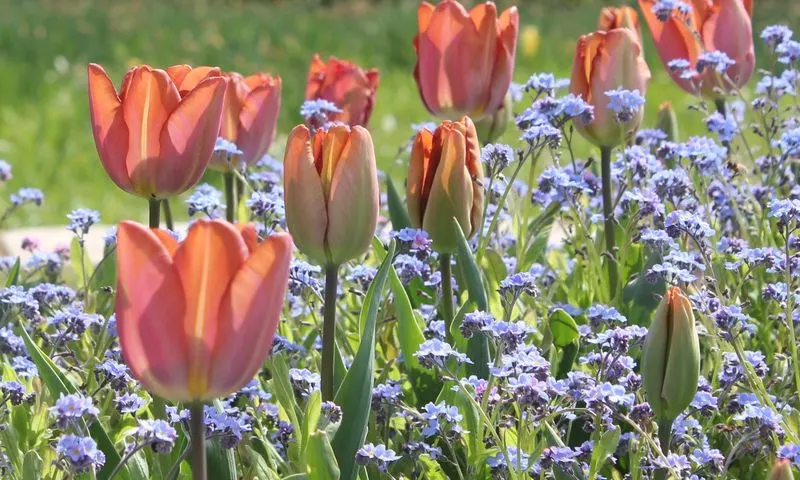
Forget-me-nots enchant with their tiny blue flowers and cheerful yellow centers. These charming blooms are ideal for adding a touch of whimsy to gardens. They thrive in moist soil and are often found near streams or ponds, where their petite size is perfectly suited. Forget-me-nots are perfect for adding color to shaded areas or as a delicate ground cover. Their name and appearance evoke a sense of nostalgia, making them a beloved choice among gardeners.
Anemone
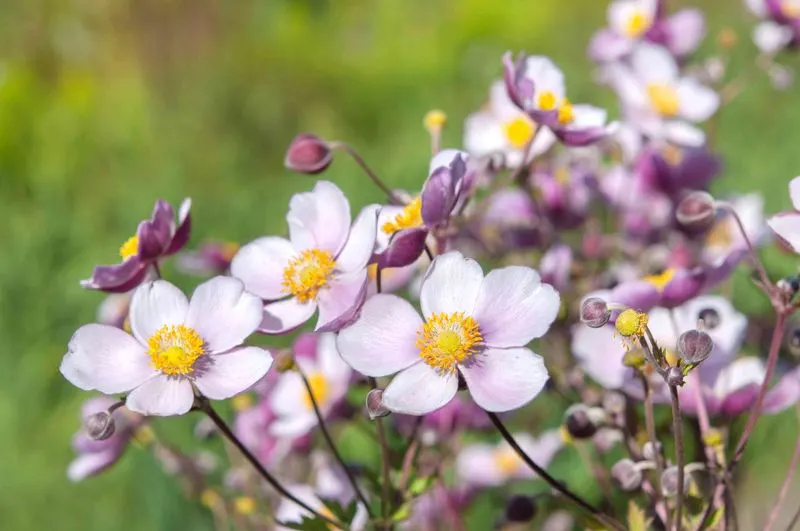
Anemones add a touch of drama to spring gardens with their striking blooms. These flowers feature bold colors and unique petal arrangements, making them a standout choice for garden beds. Anemones thrive in well-drained soil and full or partial sun. Their long-lasting blooms can be enjoyed from early spring into warmer months. These flowers are perfect for adding height and texture to borders, and their vivid colors attract pollinators, enhancing garden biodiversity.
Hellebore
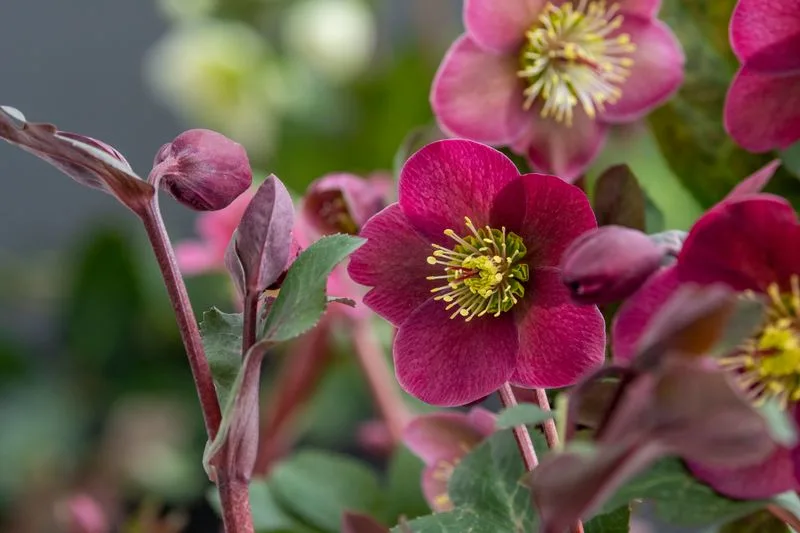
Hellebores, often referred to as the ‘Christmas rose,’ bloom when most other plants are dormant. Their nodding flowers can be found in shades of white, pink, or deep burgundy. Hellebores prefer shaded spots with rich, well-drained soil. These hardy perennials are perfect for woodland gardens or shaded borders, where their unique blooms can be appreciated. Their evergreen foliage adds year-round interest, and their resilience makes them a favorite among gardeners seeking winter color.
Azalea
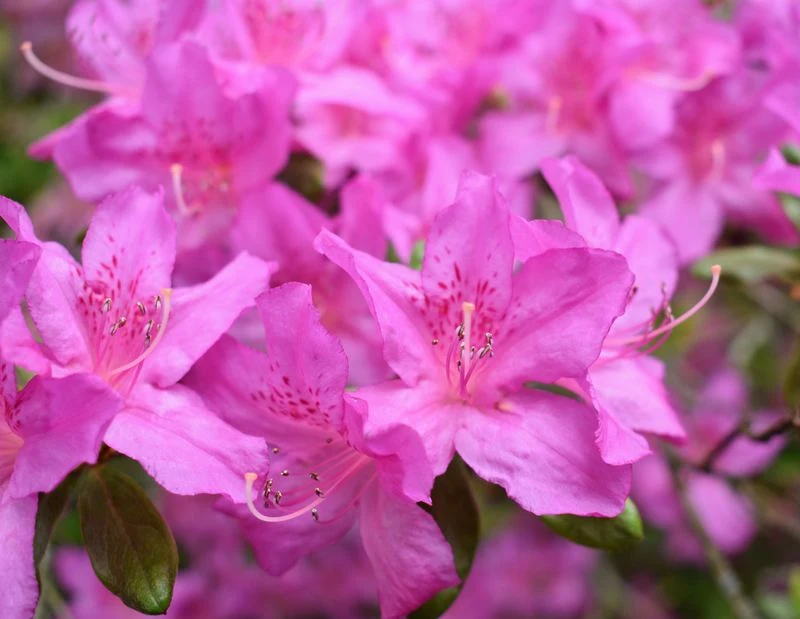
Azaleas are known for their stunning displays of color in spring, with blooms that cover the entire bush. These flowers come in various shades, from soft pinks to vibrant purples and reds. Azaleas prefer acidic soil and can thrive in both sunny and shady spots, making them versatile additions to any garden. Their lush blooms make them ideal for hedges or foundation plantings. As a bonus, azaleas attract pollinators, adding life and movement to the garden.
Camellia
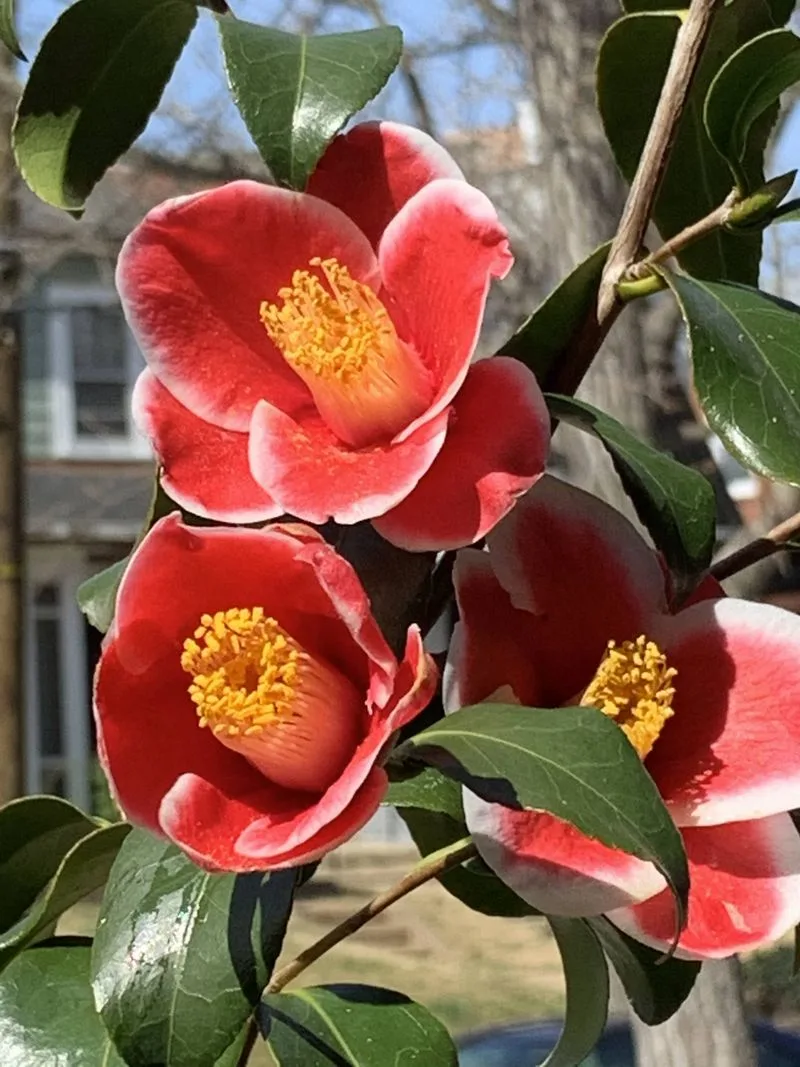
Camellias are cherished for their glossy leaves and exquisite blooms that emerge in early spring. These flowers are available in shades of pink, red, and white, offering a classic beauty to garden landscapes. Camellias prefer well-drained, acidic soil and dappled shade, making them ideal for sheltered garden spots. Their long-lasting blooms can span several weeks, providing a continuous display of elegance. Camellias are versatile, fitting into both formal and casual garden styles.
Freesia
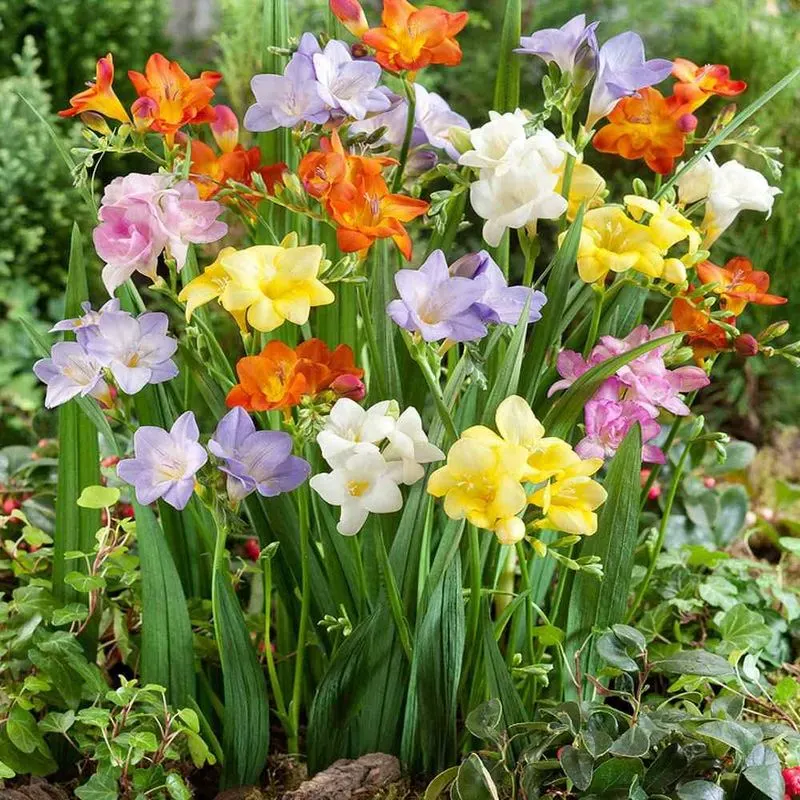
Freesias are adored for their sweet fragrance and vivid colors, making them a favorite for indoor arrangements. These flowers have a graceful, arching form and come in hues of yellow, pink, and white. Freesias thrive in sunny locations with well-drained soil. They’re ideal for garden beds, containers, or as cut flowers. Their scent can fill a room, and their cheerful blooms bring a touch of spring indoors. Planting freesias ensures a splash of color and aroma.
Pansy
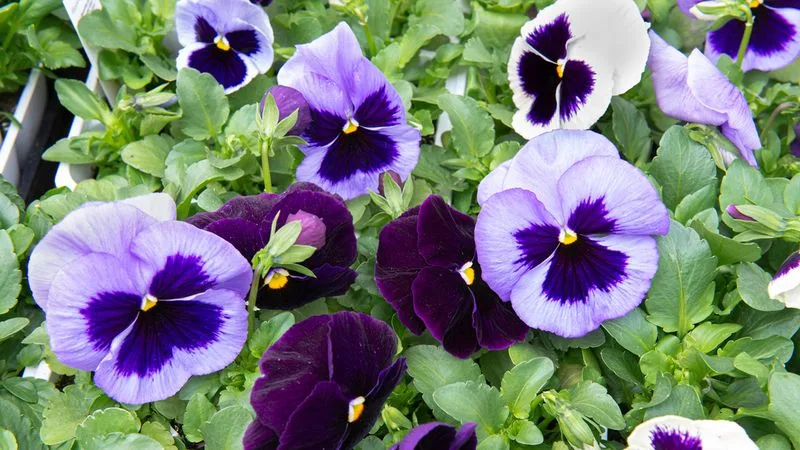
Pansies are known for their cheerful ‘faces’ and wide range of colors, making them a popular choice for spring gardens. These hardy flowers can thrive in both cool and warm climates, providing long-lasting blooms. Pansies are perfect for containers, window boxes, or garden borders, where their compact size can be fully appreciated. Their ability to withstand cold makes them a reliable option for early spring planting. With minimal care, pansies offer continuous bursts of color.
Bleeding Heart
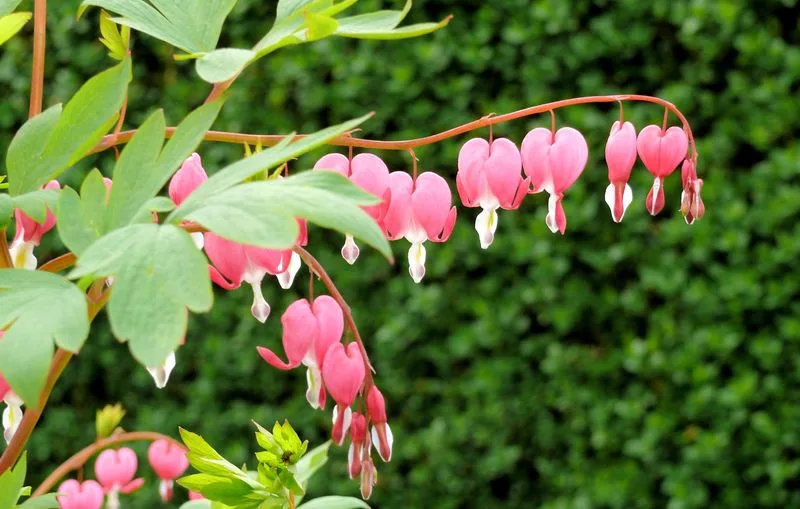
Bleeding hearts captivate with their unique heart-shaped blooms that dangle from arching stems. These flowers add an element of romance to shaded garden areas. Bleeding hearts prefer cool, moist soil and thrive in partially shaded spots. Their delicate appearance belies their hardiness, returning each year with minimal care. These plants are perfect for woodland gardens or shaded borders, where their charming blooms can be a focal point. They offer a touch of whimsy.
Lily of the Valley
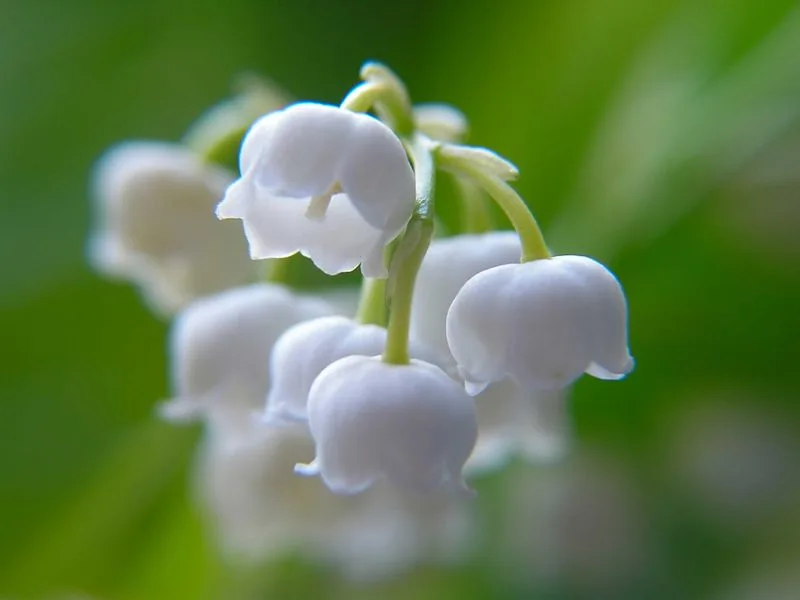
Lily of the valley enchants with tiny, nodding bell-shaped flowers that emit a sweet fragrance. These flowers are perfect for shaded areas, thriving in cooler temperatures. Lily of the valley spreads easily, making it an excellent ground cover for shady spots. Their delicate beauty is matched by their resilience, returning each spring with reliable regularity. As a timeless symbol of purity and sweetness, they add an understated elegance to any garden setting.
Sweet Pea
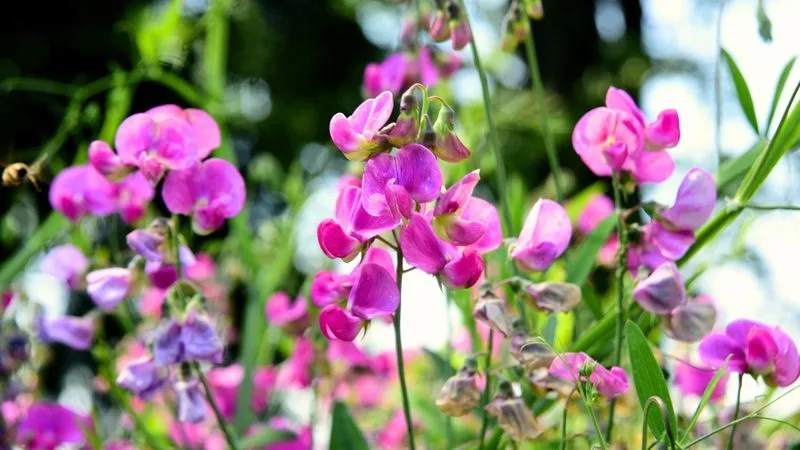
Sweet peas are beloved for their alluring scent and delicate blooms. These climbing plants can transform trellises, fences, or walls into displays of pastel shades and rich purples. Sweet peas thrive in well-drained soil and full sun, requiring support to reach their full height. Their fragrance is intoxicating, making them popular for cut flowers. Planting sweet peas adds color and aroma to gardens, creating a sensory experience that delights the senses.
Viola
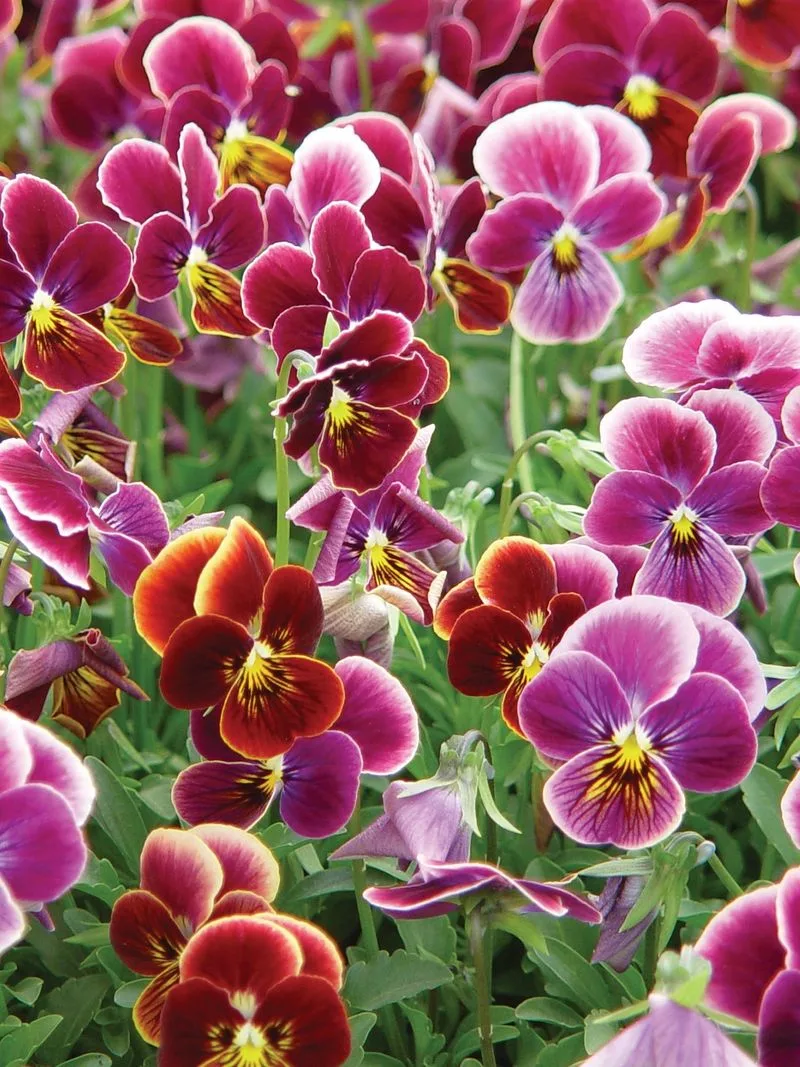
Violas are charming, petite flowers that bring a burst of color to spring gardens. These adaptable plants are available in a range of shades, including purples, yellows, and whites. Violas thrive in cooler conditions and can be planted in beds, containers, or hanging baskets. Their small size makes them ideal for edging or filling in gaps. Despite their delicate appearance, violas are robust and can bloom continuously, offering vibrant beauty throughout the spring season.

